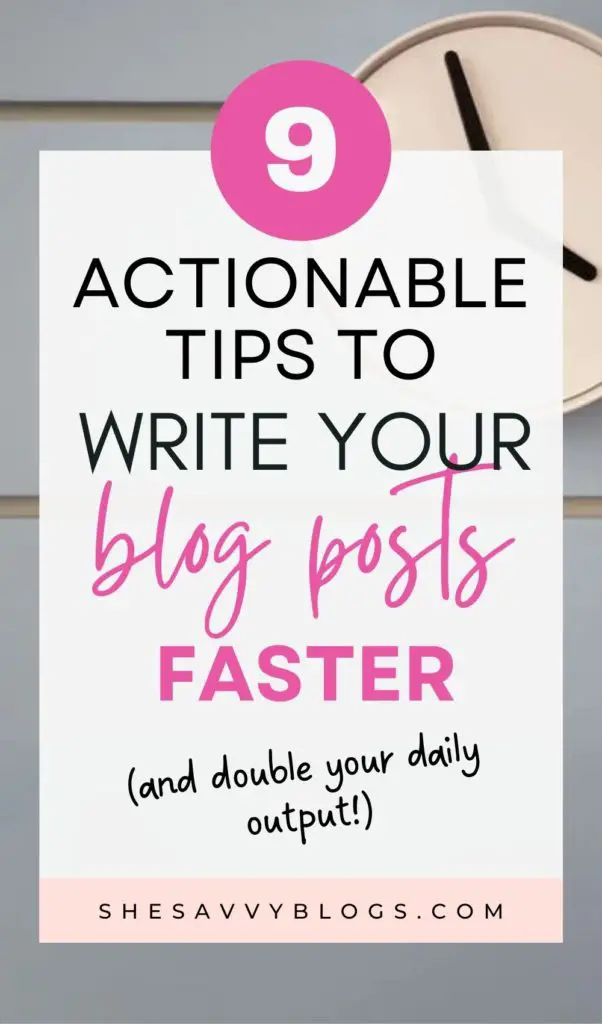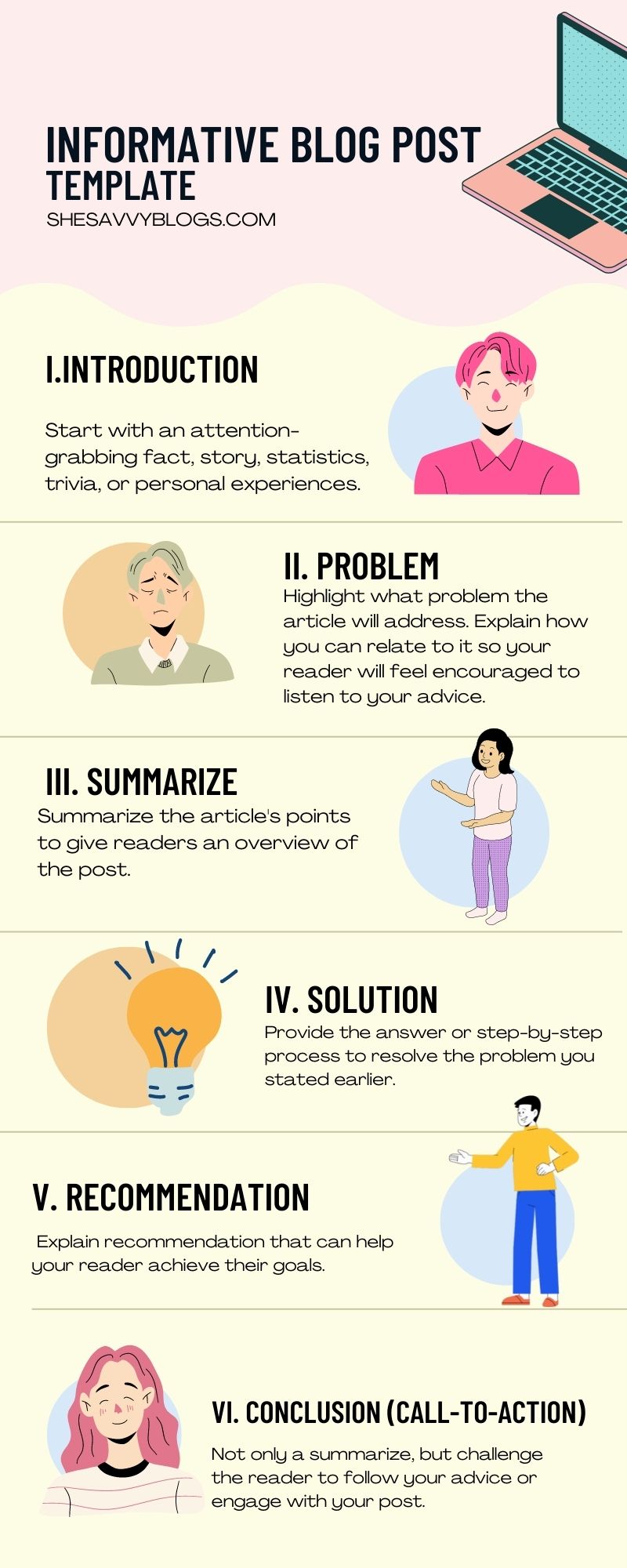*This post may contain affiliate links. That means I may earn a small commission from qualifying purchases or sign-ups at certainly no additional cost to you! Thanks!*
When I first started writing blog posts, it took me several hours to come up with an article worth sharing with my readers. Most days felt like a crawl, but there were also times when I seemed to have finally hit my stride.
After observing what made those instances different, I’ve come up with this list of seven writing tips and techniques to speed things up as a blogger.

How to Write a Blogs Faster
I know writing may take hours — or even days — to create. Now, how do you write blog posts faster and double your daily output? Here are 9 tips!
1. Plot your content ideas in a calendar.
Plan your days ahead.
After researching potential topics and keywords for your blog, schedule the target posting dates for each in a content calendar.
Mark when you should start and finish writing the blog posts.
Knowing what you will write and when you should complete it can prevent you from getting stuck due to a lack of ideas or procrastination.
Create and stick to your content calendar.
Trick your brain into welcoming tasks that need to be done rather than resisting or ignoring them.
2. Do your 1-hour research separately from writing.
Researching for about 1 hour first gives you an overview of what you’ll cover.
When you’re unfamiliar with the topic and haven’t researched enough, you’d find yourself writing, scratching, and rewriting details just because you don’t have a big-picture view of what you’re writing about.
Whenever I write about unfamiliar topics, I binge-watch/read multiple resources — whether these are blogs, testimonies, or Youtube videos, I will consume them until I learn them by heart.
I tend to list down key points – data, measurement, or advice — until I build an excellent founding knowledge about the topic.
A great blog post requires research and a good analysis of the research, a personal take, and an experiential testimony.
Before writing about it, you have to completely understand the content. From there, it’s easy peasy.
3. Set micro-targets.
Aside from the content calendar, I noticed that I’m more productive when I’ve got smaller targets I could achieve while writing the blog post.
You can combine this with the popular time management approaches, such as the Pomodoro technique, for maximum efficiency.
How?
First, break down your typical writing session into short intervals with quick breaks.
For example, I would work on the article for 15 minutes and then take a five-minute break before resuming work.
Francesco Cirillo, the inventor of the Pomodoro technique, explained that doing so would significantly strengthen our focus and lengthen our attention span.
I take things to the next level by setting word-count targets I must accomplish within the 15-minute interval allocated for work.
Yes, these micro-targets can increase your stress level, but they would also push you to achieve more and hone your writing skills simultaneously.
4. Consider writing the introduction last.
A lot of writers get stuck with the first line of the article. After all, the introduction typically convinces the readers to learn more about what you have to say about the topic.
However, you’re not required to begin writing the blog post from top to bottom. If you can’t think of a great hook, skip to the body or conclusion of the article.
Focusing on the body first will help solidify the ideas in your head.
On the other hand, writing the ending first can improve your focus on the message you want to convey to the readers.
Sometimes, I would get excellent ideas for the intro while writing the body. If that ever happens to you, take note of them so you can finish the introduction later.
5. Don’t mind the mess—edit later!
I understand that most beginners find this challenging, but try your best to resist your need to edit while writing the blog post.
The two processes work on different levels.
Your creativity flows while you are in writing mode, while your brain focuses on the small details if you edit the content.
If you switch from one state to another, you won’t make much progress and might even fail to hit the deadline.
I suggest creating the draft first, no matter how messy it will be.
When you’re done, go through the entire thing to improve the flow, change the wording, and correct any grammatical mistakes.
I use Grammarly for my 2nd drafts. It saves a lot of time checking misspelled words and punctuation, especially in long-form content.
6. Follow a template.
If you have a blog outline that works well, turn it into a template you can use repeatedly.
This template allows you to focus more on generating ideas rather than starting from scratch whenever you need to produce content.
Here’s a sample template that I have for writing brief but informative guides:

Introduction
Start with an attention-grabbing fact or story. Common examples include statistics, trivia, or personal experiences.
Problem
Highlight what problem the article will address. Explain how you can relate to it so your reader will feel encouraged to listen to your advice.
Summary
Summarize the article’s points to give readers an overview of the post.
Solution
Provide the answer or step-by-step process to resolve the problem you stated earlier.
Throw in some examples to make it easier for the reader to visualize or understand the concepts you’re explaining.
You can also include the things to avoid or other tips to ensure your reader’s success.
Recommendation
If you have products or services to offer the reader, explain why and how your proposal or recommendation can help your reader achieve their goals related to the problem.
Conclusion
An excellent conclusion does not only summarize the points covered earlier in the article. It should also challenge the reader to follow your advice or engage with your post.
7. Set yourself a timer.
Here’s how I write blog posts faster — setting a timer for myself. It is my savior from the distracted and booming mind.
I know I’m not the only one who had their minds drift miles away from their computer screen.
While writing, I get tempted to check my phone, my e-mails, blog analytics, or do some unrelated social media stalking with random people.
And so, setting a timer is a great way to give me pressure.
As Parkinson’s Law states, “work expands to fill the time available for its completion.”
In other words, without deadlines pressuring you, it would take you as long as you want to finish a task.
To accomplish tasks every day, I set my timer like this:
- I’ll finish my keyword research within 30 minutes.
- I should finish my first draft at noon.
- I must publish this at 6 PM.
Observe how your mind works faster when you have a set timer for yourself.
My mind goes in a rush when I have an hour left. Nothing beats the deadline rush.
8. Take a break if you have writer’s block.
Pushing yourself to write despite experiencing a creative slowdown won’t favor you or your readers.
Instead, stop working on the article and do something else—like, go for a nap, prepare dinner, or head outside and enjoy the weather. It can be anything, provided that it’s not related to your blog.
Afterward, head back to your work desk without thinking too hard about what you’re about to do.
Open the file again and write whatever comes to mind.
More often than not, I had already overcome writer’s block because the subconscious part of the brain was still working on what I must accomplish.
9. Incorporate writing into your daily routine.
Practice your writing skills daily to make you faster and better at it. That’s why professional athletes train for up to eight hours each day.
You don’t have to spend as much time writing, but I suggest spending at least 15 minutes of your day on this activity.
If you consistently practice, writing will become part of your daily routine. It won’t feel like an uphill battle anymore to produce something for your blog.
Start Writing
And there you have it! That’s how to speed up writing blogs. Which of these blog writing tips and techniques are you doing right now? Do you think they genuinely help in finishing an article faster?
Feel free to share your thoughts in the comments below!
BLOGGING RESOURCES I RECOMMEND:
Grammarly – Detects misspelled words and grammatical errors. It gives your piece an overall performance score based on correctness, clarity, engagement, and the delivery of your blog. All free!
Ezoic – Aside from ad monetization, Ezoic also offers SEO, Analytics, and Site Speed tools. With Ezoic, my ad revenue increased 23x more than Google Adsense. They now provide an Access Now Program that accepts new blog websites with a minimum of zero – again – zero traffic.
You may also like:

